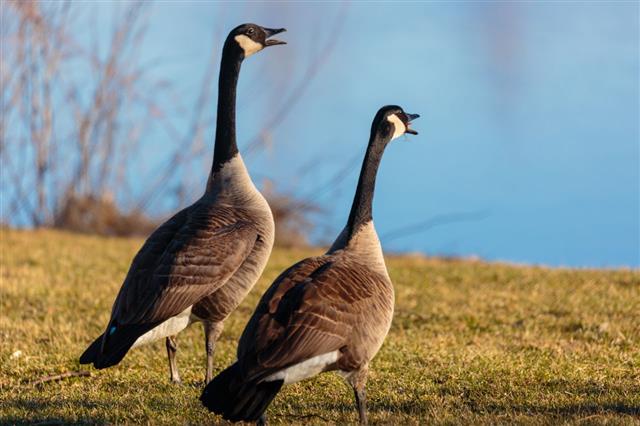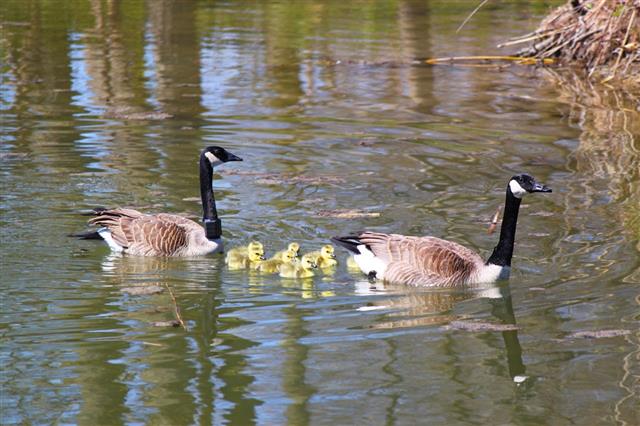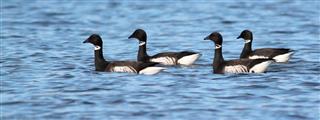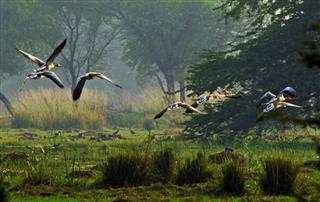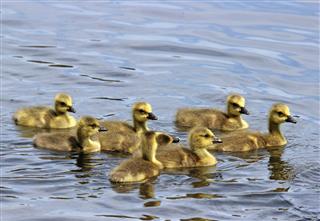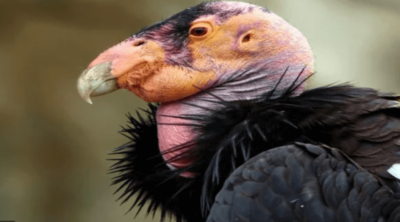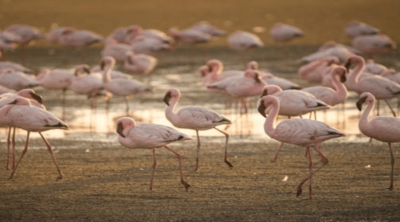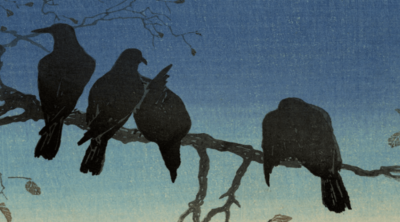
In many areas, Canada geese have a reputation as pests. However, if you learn a few of the fascinating traits these birds display, you may find it difficult not to appreciate them.
Are Geese Pests?
Geese are fascinating birds, although few people know just how unique and interesting they are. The two most widely known species of geese are the Canada goose and the Domestic goose (or Gray goose). Domestic geese are often thought of as particularly noisy and useless farm animals―they are not especially popular for their eggs or their meat (although both are used in certain parts of the world), so many who keep domestic geese do so for the feathers. For this reason, keeping geese can be a difficult and messy proposition.
In terms of reputation, Canada geese fare little better. These widespread birds are known for their annual migrations. Because such a large number of them migrate each year, they can be observed in most parts of the Western hemisphere. In some urban areas, such as Denver, Colorado, they have established permanent, non-migratory populations that are often thought of as pests. These geese eat grass in public parks, and in areas where they have no predators, their population can get out of hand.
Fascinating Facts
Despite their poor reputation, geese are very interesting birds, and educating people about some of their more fascinating characteristics could help restore a high opinion of them. Because Canada geese are one of the best-known species, it is perhaps appropriate to start with a few facts about them.
Aerodynamics
You have probably noticed Canada geese flying in elegant V-shaped formations during migration seasons. In addition to looking nice, these formations are highly aerodynamic. By lining up in a V shape, they are able to preserve their energy by riding in the air current created by birds in front of them. As you might suspect, this means that the job of the bird at the front of the formation is the most difficult, since there is no existing current to make this bird’s flight easier. Instead of choosing one strong bird to lead the way, they maintain the efficient and equitable procedure of taking turns in this role. When the lead bird gets tired, he or she will drop to the back of the formation, allowing the next bird in line to take a turn at the front. In this way, energy is preserved and the birds maximize their traveling potential.
Caring for the Community
Taking turns leading the group is not the only socially admirable thing Canada geese do. These birds are known for looking out for one another’s best interests, which includes caring for the sick and the elderly. During migration, if one goose is too weak to carry on with the rest of the flock, another, healthy bird will stay behind with the weak bird, keeping it company and helping to protect it from predators until it regains its strength or dies. Often, the bird who stays behind will be the sick goose’s mate. Canada geese, along with most other goose species, are monogamous and form bonded pairs. Once a goose has chosen a mate, the couple will stay together until one of them dies. When a goose’s mate has died, the goose will often take up to several years to choose another mate.
The Goose Family
Within a flock, there are typically several families. In accordance with their social nature, they raise their children communally. Males and females share the responsibility of caring for goslings, and several pairs of parents may take turns caring for all the young, while other couples rest or eat. Another interesting parenting behavior is exhibited by the male geese. While mothers are teaching their young how to find food or swim, the fathers are tasked with protecting the family. Instead of keeping watch immediately alongside the children, however, the fathers will stand some distance off from the rest of the family in order to distract any predators from the little ones.
Almost all species display unique and fascinating characteristics, and Canada geese are no exception. Next time you see a migrating flock of these strangely beautiful creatures, remember these facts and try to observe some of these intriguing behavioral traits.
